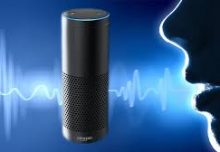 We have all heard someone this season say, “It’s just a cold,” or “I have a touch of the flu,” or similar expressions that pretty much write off a lot of what is going around. And nobody gets pneumonia, right? Wrong! It may sound like a small number, but about 6 of every 1000 people in American will have a bout with what is termed “community-acquired” pneumonia this year. Still sounds small, but the rate triples for 65 to 69 year old people…18.2 per 1000. And for 85+ year olds, the number skyrockets to 52.3 cases per 1000 people.
We have all heard someone this season say, “It’s just a cold,” or “I have a touch of the flu,” or similar expressions that pretty much write off a lot of what is going around. And nobody gets pneumonia, right? Wrong! It may sound like a small number, but about 6 of every 1000 people in American will have a bout with what is termed “community-acquired” pneumonia this year. Still sounds small, but the rate triples for 65 to 69 year old people…18.2 per 1000. And for 85+ year olds, the number skyrockets to 52.3 cases per 1000 people.
So, if you have an older loved one in your orbit, be vigilant to signs and symptoms that can tell you they have graduated to pneumonia. There are six signs that should alert you to something that deserves a visit to the doctor or emergency facility:
- Productive cough – the kind that almost rattles with the mucous as a person coughs to clear their lungs.
- Fever or not – Fever with a pneumonia infection is common among younger individuals, but pneumonia actually can suppress body temp in older cases.
- Chest aches – While we are most often concerned about heart issues with chest pain, breathing with pneumonia can give similar symptoms.
- Tired – While the immune system fights pneumonia, it takes energy away from the rest of the body resulting in fatigue.
- Fuzzy head – The lungs are not the only congested organ; the brain gets a bit muddled with pneumonia also.
- Breathless – With congested lungs, it should be no surprise that a patient with pneumonia may also be short of breath with even modest activities.
The rules of engagement with pneumonia are simple.
- Doctors’ orders – especially with completing the full course of antibiotics…be sure your loved one takes all the pills prescribed.
- Sleep – give the body a chance to devote its undivided attention to fighting the bug by resting and getting help around the house.
- Fluids – think of it as “flushing” out the system, and it also helps get rid of the congestion in the lungs.
And remember that the risk may be lower for younger people, but the operating rules are pretty much the same. Give all the support you can to help your body fight the invaders too!
Charlotte Bishop is an Aging Life Care Advisor, Geriatric Care Manager and founder of Creative Care Management, certified professionals who are geriatric advocates, resources, counselors and friends to older adults and their families in metropolitan Chicago. She also is the co-author of How Do I Know You? A Caregiver’s Lifesaver for Dealing with Dementia.







